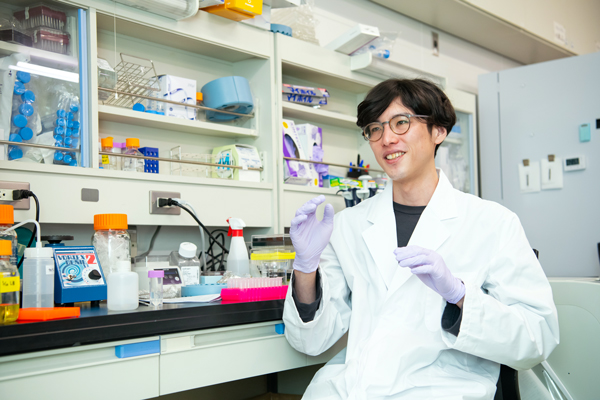Mar. 18, 2025
Searching for the right environment
Nao Okuma, Special Postdoctoral Researcher
Please describe your research.
Broadly, my team studies how crops grow and adapt to environmental changes, looking at things ranging from soil microbes to plant adaptation strategies. We track crop conditions and analyze soil nutrients and microbes. A key objective of mine is to understand the complex relationships between agricultural plants, environmental conditions, microbes and the soil.
Why did you become a scientist?
I chose a research career relatively recently. I studied undergraduate agriculture, pursued a masters degree and worked in a start-up making biofuels. I soon realized I was better suited to research, so I returned to it.
One reason was that during my undergraduate degree, I was taught to approach research papers as if they were half-truths. When you are not used to reading papers, one tends to read them as if they were a textbook. However, I was told to stop doing that. I learned that no matter who wrote the paper, or what it was about, it was important to approach it with the attitude of ‘Is this true?’. As a result, I feel that research is a process using your imagination to reveal what is currently unknown. That is where the fun and joy life for me.

How did you come to work at RIKEN?
In my previous research role, I wanted to examine agricultural conditions in detail at a plant–soil–microbe level. But it was hard to find an environment for extensive research. Just as I was about to give up, I discovered my current division. I applied for RIKEN’s Special Postdoctoral Researcher program—and here I am.
What RIKEN resources do you use?
The RIKEN BioResource Research Center’s Experimental Plant and Microbe Divisions constantly support us with plant seeds and bacteria for our studies. They often also carry out the necessary genetic modifications to create these resources.
My research is important for society because…
The environment in which plants live is changing. My goal is to understand how plants live, not only at the molecular level, but also in real outdoor agricultural environments. One example of how this knowledge could be useful is by helping farmers to develop and support the right soil communities. Soil microorganisms, such as mycorrhizal fungi, often live in symbiosis with plants and can help crops to grow more efficiently. Advances in our understanding of how to support beneficial symbiotic relationships between plants and microorganisms are expected to contribute to more efficient crops and a more sustainable food supply, reducing the environmental burden of agriculture.
I hope that my work to comprehensively digitally model crops in their environment will help predict how adjustments, such as changing crop types or working on microbial soil conditions, will impact agricultural outcomes.
Rate this article

